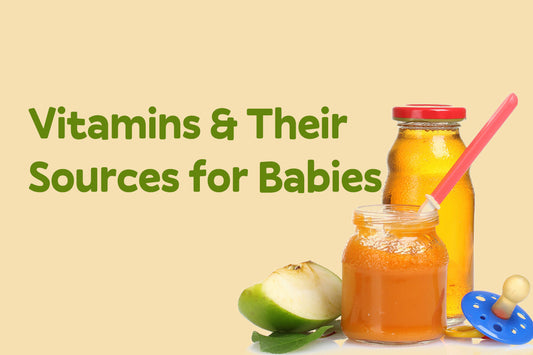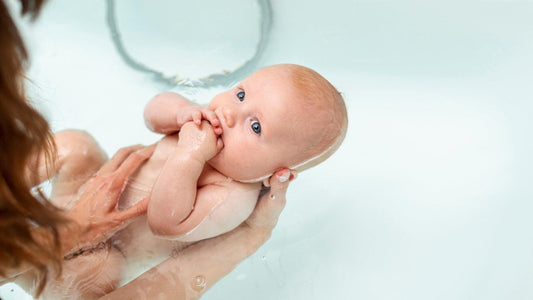Wash Your Newborn Baby's Hair: How to Clean a Newborn Scalp?
How to Wash Your Newborn Baby's Hair: A Complete Guide to Cleaning a Delicate Scalp
Caring for a newborn’s delicate scalp and hair can be an overwhelming task, especially for new parents. A newborn’s scalp is highly sensitive, and maintaining a gentle care routine is essential for their comfort and health. One of the most significant milestones is your baby’s first hair wash, which typically occurs after the umbilical cord has fallen off. In this guide, we’ll walk you through how to handle your baby’s first hair wash, care for common scalp conditions like cradle cap, and establish a healthy hair care routine for newborns and beyond.
When to Wash Your Newborn’s Hair for the First Time
Most pediatricians recommend waiting until after the umbilical cord has fallen off to give your newborn a full bath, including washing their hair. This typically happens between one to three weeks after birth. Until then, you can sponge-bathe your baby while carefully cleaning their face and neck.
During the first few months, your baby’s scalp may be prone to dryness or cradle cap. Using a gentle approach will keep your newborn comfortable and prevent unnecessary irritation.
Understanding and Managing Cradle Cap in Newborns
Cradle cap is a common skin condition in newborns, presenting as crusty, oily, or scaly patches on the scalp. It’s completely harmless and not caused by poor hygiene or allergies. However, if left untreated, cradle cap can sometimes lead to discomfort. Fortunately, there are gentle and effective ways to manage it at home.
How to Treat Cradle Cap:
Apply Mineral Oil or Coconut Oil: To soften the scales caused by cradle cap, apply a small amount of mineral oil or natural oils like coconut oil to the affected areas. Allow the oil to sit on your baby’s scalp for sometime. The oil will soften the scales, making them easier to gently remove.
Use a Soft Brush: After the oil has set, use a soft baby brush to lightly comb away the flakes. Be very gentle to avoid irritating the scalp. Never scrape or pick at the cradle cap, as this can lead to skin irritation or infection.
Shampoo Regularly: Following the oil treatment, wash your baby’s hair with a mild baby shampoo to remove excess oil and flakes. Choose a gentle, fragrance-free baby shampoo designed specifically for delicate skin to avoid irritation.
While cradle cap can resolve on its own over time, these steps will help manage it more effectively and keep your baby’s scalp clean and comfortable.
Choosing the Right Shampoo for Your Baby
Newborns have ultra-sensitive skin, and using the wrong products can lead to irritation or dryness. That’s why choosing the right shampoo is crucial for your baby’s hair care routine.
What to Look for in a Baby Shampoo?
Mild Formula: Opt for a shampoo that is specifically formulated for babies. Look for words like “mild,” “gentle,” or “tear-free.” These shampoos are typically free of harsh chemicals, fragrances, and dyes that can irritate your baby’s skin and eyes.
Fragrance-Free: Fragrances, even those labeled as "natural," can sometimes irritate a baby’s sensitive skin. It’s best to use a shampoo that’s fragrance-free, especially for newborns.
Hypoallergenic: To reduce the risk of allergic reactions, choose a shampoo labeled as hypoallergenic. This means the product is less likely to cause allergic responses, making it a safer option for your baby’s sensitive scalp.
pH-Balanced: A pH-balanced shampoo ensures that your baby’s delicate skin barrier is not disrupted, which can lead to dryness or irritation.
Using a mild, gentle shampoo will help clean your baby’s hair without stripping away the natural oils that protect their scalp.
How Often Should You Wash Your Baby’s Hair?
Newborns don’t need frequent hair washes. In fact, washing your baby’s hair too often can lead to dryness. Most experts recommend washing your newborn’s hair once or twice a week, depending on their needs.
Hair Washing Frequency:
For Newborns (0-6 months): Once or twice a week is sufficient. However, if your baby’s scalp becomes soiled or oily, you can wash it as needed. Be cautious not to over-wash, as this can dry out your baby’s skin.
For Babies (6 months - 1 year): As your baby grows, their scalp may produce more oils, especially if they’re starting to explore the world and get messier during meals or playtime. You can wash their hair 1 to 2 times a week, or more frequently if needed.
For Toddlers and Older Children: By the time your baby reaches toddlerhood, a twice-weekly hair wash is typically sufficient. You can increase the frequency if they have a more active lifestyle or longer hair.
Steps for Washing Your Baby’s Hair
Here’s a simple guide to safely and effectively wash your newborn’s hair:
1. Prepare the Water: Use lukewarm water to wash your baby’s hair. The temperature should be comfortable—neither too hot nor too cold.
2. Apply a Small Amount of Shampoo: Gently wet your baby’s hair and apply a small amount of the mild shampoo. Avoid using too much, as it can be difficult to rinse out.
3. Massage Gently: With your fingertips, softly massage the shampoo into the scalp. Be gentle to avoid causing discomfort to your baby’s sensitive skin.
4. Rinse Thoroughly: Use a cup or your hands to gently pour water over your baby’s head to rinse the shampoo. Make sure to keep the water out of their eyes and face.
5. Dry Carefully: Pat your baby’s hair dry with a soft towel. Avoid rubbing their scalp, as it can cause irritation.
Hair Care Routine for Older Babies and Toddlers
As your baby grows into a toddler, their hair care routine can be adjusted. Washing their hair twice a week with a mild shampoo should keep their scalp clean while maintaining the natural oils that protect their hair and skin.
If your toddler has longer hair, you may need to brush it gently to avoid tangles. Use a soft-bristled brush or wide-tooth comb to prevent pulling or damaging their delicate hair.
Conclusion: Gentle Hair Care for a Healthy Baby Scalp
Proper hair care is essential for keeping your baby’s scalp healthy and comfortable. Start with a minimal approach—washing their hair once or twice a week and using a gentle, fragrance-free shampoo designed for sensitive skin. Managing conditions like cradle cap with care and patience ensures your baby’s scalp stays irritation-free.
Remember, less is more when it comes to washing your baby’s hair. A gentle, consistent routine will promote a healthy scalp and allow your little one to stay clean and comfortable throughout their early stages of life.





